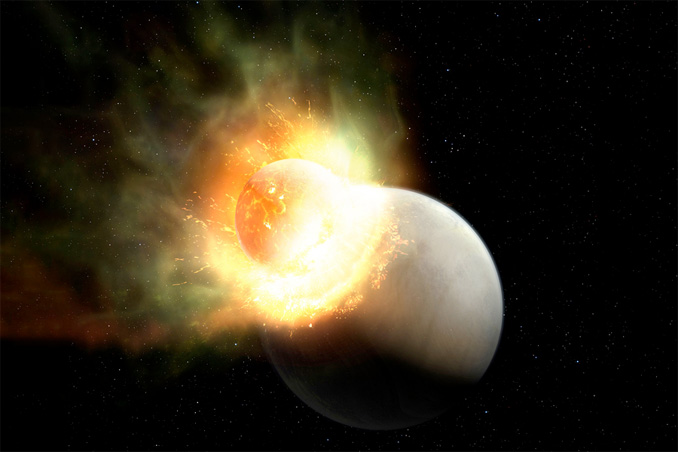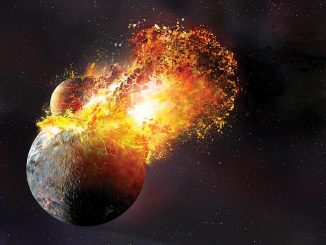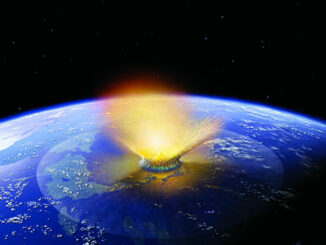
Cataclysmic impacts like the one believed to have formed the Earth-Moon system are thought to be common in young, still-forming solar systems, but it’s been difficult to catch sight of such activity as it happens.
Now, astronomers at MIT, the National University of Ireland Galway, Cambridge University and other institutions have found signs of just such an impact 95 light years from Earth, a collision between an Earth-size terrestrial exoplanet and a smaller body that blasted away much of the larger planet’s atmosphere.
“This is the first time we’ve detected this phenomenon, of a stripped protoplanetary atmosphere in a giant impact,” said lead author Tajana Schneiderman, a graduate student in MIT’s Department of Earth, Atmospheric and Planetary Sciences. “Everyone is interested in observing a giant impact because we expect them to be common, but we don’t have evidence in a lot of systems for it. Now we have additional insight into these dynamics.”
Based on observations of unusual gas and dust around a young star known as HD 172555, including large amounts of carbon dioxide that would not normally be expected so close to a sun, the researchers concluded the best explanation was an impact at least 200,000 years ago that occurred at some 10 kilometres per second (22,000 mph).
The carbon dioxide was observed within about 10 astronomical units of the star. At that range, CO2 would be quickly broken down by solar radiation. But if it resulted from a collision in the last 200,000 years, one that blasted a large portion of a planet’s atmosphere into space, enough would still be present to explain the observations.
“Of all the scenarios, it’s the only one that can explain all the features of the data,” Schneiderman said. “In systems of this age, we expect there to be giant impacts, and we expect giant impacts to be really quite common. The timescales work out, the age works out, and the morphological and compositional constraints work out. The only plausible process that could produce carbon monoxide in this system in this context is a giant impact.”
The findings are presented this week in the journal Nature.



